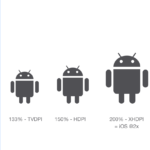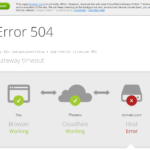If you’re new to Linux, figuring out how to install .deb file in Ubuntu might seem a bit tricky at first. But don’t worry it’s actually quite simple, and you don’t need to be a Linux guru to get it done. Whether you’re installing your favorite app or testing out a new tool that’s not available in the Software Center, this friendly guide will walk you through everything you need to know in a clear and beginner-friendly way.
What is a .deb File and Why Is It Important?
A .deb file is a Debian software package used to install applications on Debian-based Linux systems, such as Ubuntu. Think of it like a Windows .exe or a macOS .dmg file. It contains all the information and files needed to install a program on your system. When developers distribute Linux software outside of official repositories, they often use .deb packages. Knowing how to install these packages gives you access to a much wider range of software.
Method 1: Installing via Ubuntu Software Center (Easiest Way)
This method is the most user-friendly and doesn’t require any terminal commands.
Steps:
Download the
.debfile from the official source or developer’s website.Once downloaded, navigate to your Downloads folder.
Double-click on the
.debfile.It will open in the Ubuntu Software Center or Software Installer.
Click “Install”, enter your password if prompted, and let Ubuntu do the rest.
Pros:
No terminal knowledge required.
Ideal for beginners.
Very visual and intuitive.
Method 2: Installing Using the Terminal with dpkg
The dpkg command offers more control, especially if you’re managing multiple installations or want to see real-time feedback.
Steps:
Open your Terminal using
Ctrl + Alt + T.Move to the folder where your
.debfile is located:Run this command:
Replace
your-file-name.debwith the actual filename.If you encounter dependency errors, fix them with:
Pros:
Great for power users.
Allows faster installations.
Cons:
Might require extra steps if dependencies are missing.
Method 3: Installing .deb Files with apt (Recommended for Stability)
Using the apt command is a cleaner method than dpkg because it also handles dependency resolution automatically.
Steps:
Open Terminal.
Run the following command:
The
./tells Ubuntu to look in your current directory.
Why choose this?
It automatically downloads and installs any missing packages.
Fewer errors and smoother installations.
Bonus Tool: GDebi Package Installer
GDebi is a lightweight GUI tool specifically designed to install .deb files and automatically resolve dependencies.
To install GDebi:
To use it:
Right-click on the
.debfile.Choose “Open With GDebi Package Installer”.
Click “Install Package”.
Pros:
Easier than
dpkg.Safer installation with fewer errors.
How to Remove Installed .deb Packages in Ubuntu
Removing an application installed via a .deb file is just as easy as installing it.
Option 1: Using Terminal
Find the exact package name:
Remove it with:
Option 2: Use Ubuntu Software Center
Open Ubuntu Software Center.
Search for the app.
Click “Remove”.
Useful Tips When Working With .deb Files
Always download from official websites or trusted sources to avoid security risks.
Make sure your Ubuntu version is compatible with the
.debfile.If an app fails to launch after installation, try running it from Terminal to see any error messages.
Clean up leftover packages with:
Common Errors and How to Fix Them
1. Dependency Issues
This is the most common problem. You can fix it by running:
2. Architecture Mismatch
If you’re using a 64-bit system, ensure you’re not downloading a 32-bit .deb package.
3. File Not Found Error
Make sure you’re in the right directory when using the terminal. Use ls to check the files in your folder.
Conclusion
Now that you’ve learned exactly how to install .deb file in Ubuntu, you’re ready to take full control of your software experience. Whether you prefer using the Software Center, Terminal, or GDebi, there’s a method that will suit your needs. This guide gave you all the tools to confidently install .deb packages, handle errors, and even uninstall them when necessary.
Stay curious, experiment safely, and enjoy the freedom that Ubuntu and Linux offer.

















Leave a Review